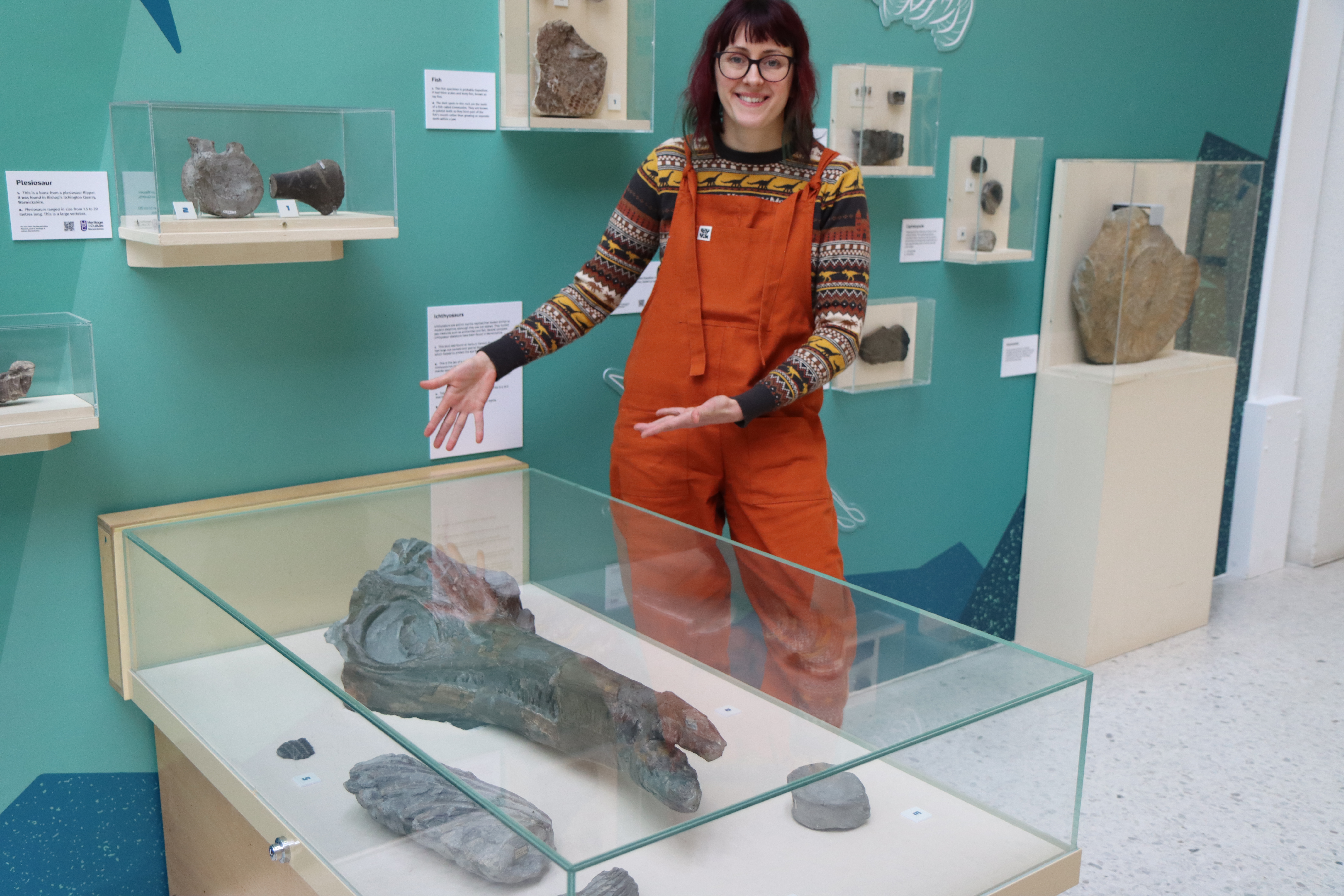Vote now! Herbert's ichthyosaur naming competition shortlist announced
19 March 2024
A Coventry museum’s campaign to name one of its prize exhibits has reached voting stage.
Earlier in the year it was announced Herbert Art Gallery & Museum would be holding a naming competition for its much-loved and locally-discovered ichthyosaur skull.
Visitors to the venue throughout January and February were able to put forward their naming suggestions for the specimen. A carefully picked judging panel then waded through suggestions to narrow it down to a final five.
The five names chosen in no particular order are:
● Finn
● Skully
● Alfred
● Salty
● Hope-osaur
Two respected palaeontologists made up the judging panel - Emma Bernard, Curator of Fossil Fish at the Natural History Museum and Dr Jon Radley, Curator of Natural Sciences at Warwick Museum and co-describer of Warwickshire’s own theropod dinosaur Cruxicheiros.
Herbert curator Ali Wells said: “I’m delighted with the names suggested by the public - there were some wonderful options to pick from which made it tough for our guest judges.
“But the five they’ve landed on are all fantastic. The judges were looking for snappy nicknames, and they felt that Salty, Skully and Finn had a lovely link to sea creatures.
“Alfred was chosen for our benefactor, Sir Alfred Herbert, as a nod to the contributions he had made to the city, his workforce and generally making culture and history accessible to Coventry residents.
“Hope-osaur was nominated as it’s a positive name which links treasures from the natural world with hope for the planet in the climate emergency. The name is also a small tribute to the Natural History Museum’s wonderful Hope whale skeleton, suspended on the ceiling of its main hall to serve as a reminder of humanity’s power to shape a sustainable future.
“So the voting is now open, and I can’t wait to see which name we finally land on.”

Vote for your favourite name by clicking: https://forms.gle/KZR6GAgyqLe1vCZF9
It’s no joke, voting closes on Monday 1 April 2024.
This specimen, along with tens of others, was found at Harbury Cement Quarry. A well-known Coventry naturalist and member of the Coventry and District Natural History and Scientific Society, EF Nicholls, arranged for the skull to be moved from the quarry to Coventry for display.
This heavy specimen was transported from Harbury by his son, who, tiring of the weight on the saddle of his bike, offloaded his cargo in a ditch at Princethorpe. On returning home he was severely reprimanded by his father and made to return to the ditch the next morning and complete the fossil's journey to Coventry, where it was placed in the Field Club room at Upper York Street.
The Nicholls fossil collection was given to the Herbert in 1961, the year after the museum opened. This specimen was a key part of our natural science displays from 2008 to 2020 and is now the central piece in our Warwickshire Jurassic Sea display alongside Dippy in the Covered Court.
Ichthyosaur facts:
Ichthyosaurs are not dinosaurs, but their sea-based cousins, also known as marine reptiles. They lived in the sea and came to the surface for air.
Ichthyosaurs are extinct and looked similar to modern dolphins, although they are not related. They hunted sea creatures such as ammonites and fish.
Ichthyosaurs had large eye sockets and special bones, called a sclerotic ring, which helped to protect the eye from water pressure at depth. Different species ranged from one to 20 metres long.
Local facts:
The Jurassic Period began about 200 million years ago and lasted for around 55 million years. Dippy, currently on loan from the Natural History Museum, residing in Herbert’s covered court, lived towards the end of the Jurassic, about 150 million years ago.
At the beginning of the Jurassic, Britain was further south than it is now. Much of England and Wales were covered in warm shallow seas, including Warwickshire. These seas were filled with marine life, such as shellfish, reptiles and squid and snail-like creatures from the cephalopod family.
Several complete ichthyosaur skeletons have been found in Warwickshire.